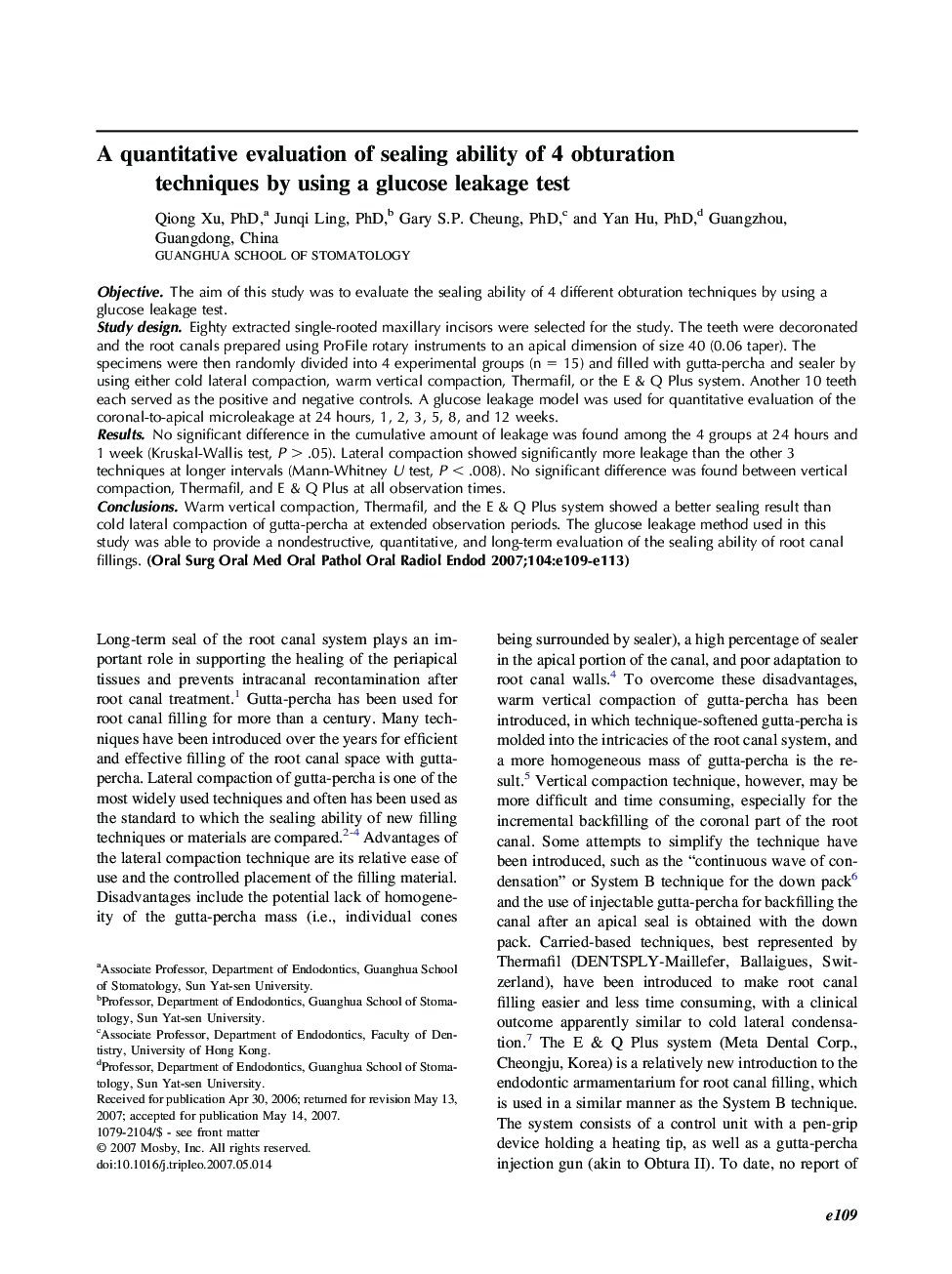| Article ID | Journal | Published Year | Pages | File Type |
|---|---|---|---|---|
| 3169318 | Oral Surgery, Oral Medicine, Oral Pathology, Oral Radiology, and Endodontology | 2007 | 5 Pages |
ObjectiveThe aim of this study was to evaluate the sealing ability of 4 different obturation techniques by using a glucose leakage test.Study designEighty extracted single-rooted maxillary incisors were selected for the study. The teeth were decoronated and the root canals prepared using ProFile rotary instruments to an apical dimension of size 40 (0.06 taper). The specimens were then randomly divided into 4 experimental groups (n = 15) and filled with gutta-percha and sealer by using either cold lateral compaction, warm vertical compaction, Thermafil, or the E & Q Plus system. Another 10 teeth each served as the positive and negative controls. A glucose leakage model was used for quantitative evaluation of the coronal-to-apical microleakage at 24 hours, 1, 2, 3, 5, 8, and 12 weeks.ResultsNo significant difference in the cumulative amount of leakage was found among the 4 groups at 24 hours and 1 week (Kruskal-Wallis test, P > .05). Lateral compaction showed significantly more leakage than the other 3 techniques at longer intervals (Mann-Whitney U test, P < .008). No significant difference was found between vertical compaction, Thermafil, and E & Q Plus at all observation times.ConclusionsWarm vertical compaction, Thermafil, and the E & Q Plus system showed a better sealing result than cold lateral compaction of gutta-percha at extended observation periods. The glucose leakage method used in this study was able to provide a nondestructive, quantitative, and long-term evaluation of the sealing ability of root canal fillings.
